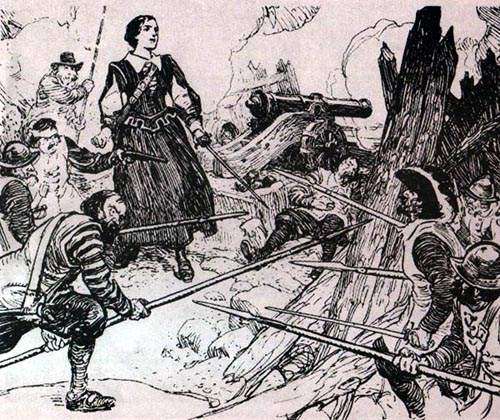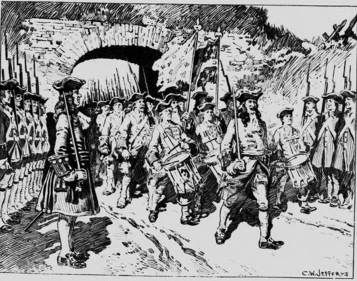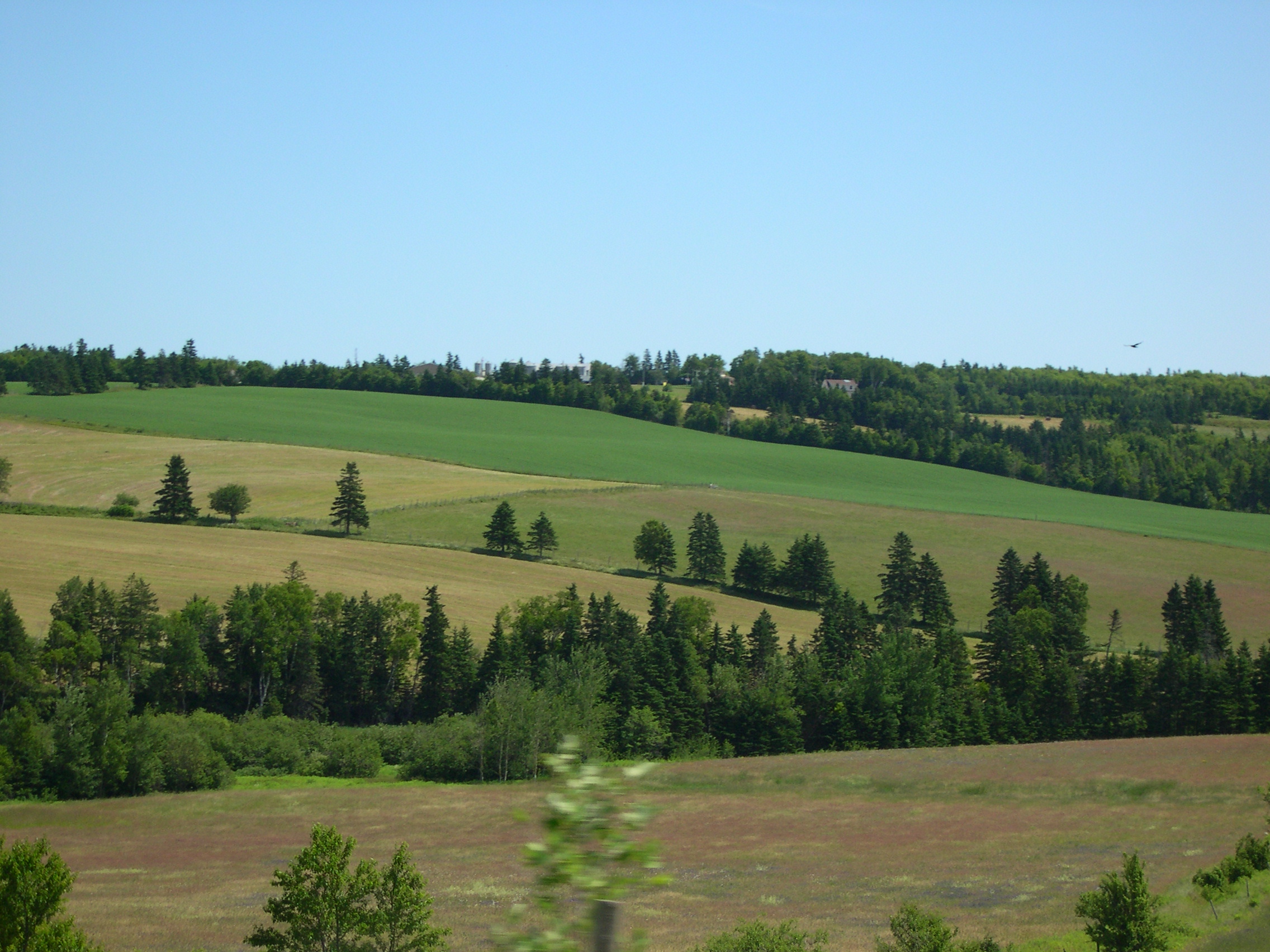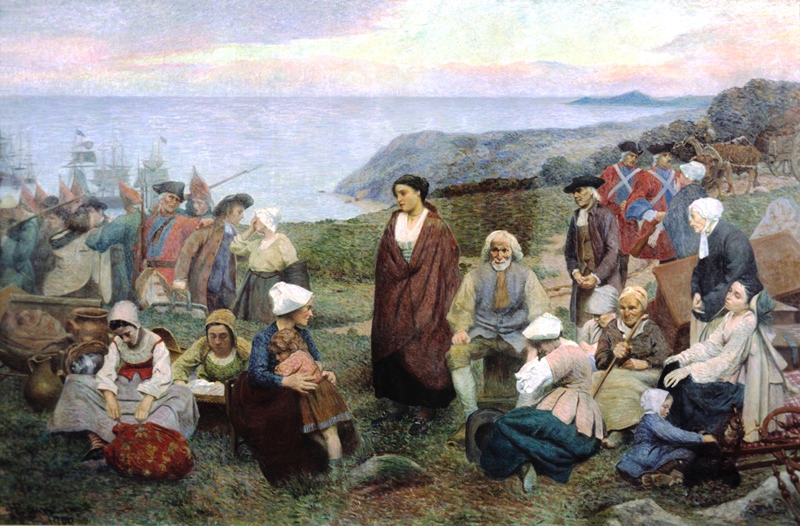|
Joseph Broussard
Joseph Broussard (1702–1765), also known as Beausoleil (), was a leader of the Acadians, Acadian people in Acadia; later Nova Scotia, Prince Edward Island, and New Brunswick. Broussard organized Military history of the Mi’kmaq people, Mi'kmaq and Military history of the Acadians, Acadian militias against the British through King George's War, Father Le Loutre's War and during the French and Indian War, Seven Years' War. After Acadia was captured by the British, he eventually led the first group of Acadians to southern Louisiana in the present-day United States. His name is sometimes presented as Joseph Gaurhept Broussard; this is likely the result of a transcription error. Broussard is widely regarded as a hero and an important historical figure by both Acadians and Cajuns. Life Broussard was born in Port-Royal (Acadia), Port-Royal, Acadia, in 1702 to Jean-François Broussard and Catherine Richard. His father came from Poitiers and his mother was born in Port Royal. He lived ... [...More Info...] [...Related Items...] OR: [Wikipedia] [Google] [Baidu] [Amazon] |
Port-Royal (Acadia)
Port Royal (1605–1713) was a historic settlement based around the upper Annapolis Basin in Nova Scotia, Canada, and the predecessor of the modern town of Annapolis Royal. It was the first successful attempt by Europeans to establish a permanent settlement in what is today known as Canada. Port Royal was a key step in the development of New France and was the first permanent base of operations of the explorer Samuel de Champlain, who would later found Quebec City, Quebec in 1608, and the farmer Louis Hébert, who would resettle at Quebec in 1617. For most of its existence, it was the capital of the New France colony of Acadia. Over 108 years control would pass between France, Scotland, England and Great Britain until it was formally ceded to Great Britain in 1713 due to the Treaty of Utrecht. From 1605 to 1613 the settlement was centred around the habitation on the north side of the Annapolis Basin, while from 1629 onwards it was centred around Fort Anne on the south side, ... [...More Info...] [...Related Items...] OR: [Wikipedia] [Google] [Baidu] [Amazon] |
Father Le Loutre's War
Father Le Loutre's War (1749–1755), also known as the Indian War, the Mi'kmaq War and the Anglo-Mi'kmaq War, took place between King George's War and the French and Indian War in Acadia and Nova Scotia. On one side of the conflict, the Kingdom of Great Britain, British and New England Colonies, New England colonists were led by British officer Charles Lawrence (British Army officer), Charles Lawrence and New England United States Army Ranger#Colonial Period, Ranger John Gorham (military officer), John Gorham. On the other side, Father Jean-Louis Le Loutre led the Mi'kmaq and the Military history of the Acadians, Acadia militia in guerrilla warfare against settlers and British forces. At the outbreak of the war there were an estimated 2500 Mi'kmaq and 12,000 Acadians in the region. While the British Siege of Port Royal (1710), captured Port Royal in 1710 and were ceded peninsular Acadia in 1713, the Mi'kmaq and Acadians continued to contain the British in settlements at Port-Ro ... [...More Info...] [...Related Items...] OR: [Wikipedia] [Google] [Baidu] [Amazon] |
United States
The United States of America (USA), also known as the United States (U.S.) or America, is a country primarily located in North America. It is a federal republic of 50 U.S. state, states and a federal capital district, Washington, D.C. The 48 contiguous states border Canada to the north and Mexico to the south, with the semi-exclave of Alaska in the northwest and the archipelago of Hawaii in the Pacific Ocean. The United States asserts sovereignty over five Territories of the United States, major island territories and United States Minor Outlying Islands, various uninhabited islands in Oceania and the Caribbean. It is a megadiverse country, with the world's List of countries and dependencies by area, third-largest land area and List of countries and dependencies by population, third-largest population, exceeding 340 million. Its three Metropolitan statistical areas by population, largest metropolitan areas are New York metropolitan area, New York, Greater Los Angeles, Los Angel ... [...More Info...] [...Related Items...] OR: [Wikipedia] [Google] [Baidu] [Amazon] |
Military History Of The Mi’kmaq People
The military history of the Mi'kmaq consisted primarily of Mi'kmaq warriors (''smáknisk'') who participated in wars against the English (the British after 1707) independently as well as in coordination with the Acadian militia and French royal forces. The Mi'kmaq militias remained an effective force for over 75 years before the Halifax Treaties were signed (1760–1761). In the nineteenth century, the Mi'kmaq "boasted" that, in their contest with the British, the Mi'kmaq "killed more men than they lost". In 1753, Charles Morris stated that the Mi'kmaq have the advantage of "no settlement or place of abode, but wandering from place to place in unknown and, therefore, inaccessible woods, is so great that it has hitherto rendered all attempts to surprise them ineffectual". Leadership on both sides of the conflict employed standard colonial warfare, which included scalping non-combatants (e.g., families). After some engagements against the British during the American Revolutionar ... [...More Info...] [...Related Items...] OR: [Wikipedia] [Google] [Baidu] [Amazon] |
New Brunswick
New Brunswick is a Provinces and Territories of Canada, province of Canada, bordering Quebec to the north, Nova Scotia to the east, the Gulf of Saint Lawrence to the northeast, the Bay of Fundy to the southeast, and the U.S. state of Maine to the west. It is part of Eastern Canada and is one of the three Maritime Canada, Maritime provinces and one of the four Atlantic Canada, Atlantic provinces. The province is about 83% forested and its northern half is occupied by the Appalachians. The province's climate is continental climate, continental with snowy winters and temperate summers. New Brunswick has a surface area of and 775,610 inhabitants (2021 census). Atypically for Canada, only about half of the population lives in urban areas - predominantly in Moncton, Saint John, New Brunswick, Saint John and Fredericton. In 1969, New Brunswick passed the New Brunswick Official Languages Act (1969), Official Languages Act which began recognizing French as an official language, along ... [...More Info...] [...Related Items...] OR: [Wikipedia] [Google] [Baidu] [Amazon] |
Prince Edward Island
Prince Edward Island is an island Provinces and territories of Canada, province of Canada. While it is the smallest province by land area and population, it is the most densely populated. The island has several nicknames: "Garden of the Gulf", "Birthplace of Canadian Confederation, Confederation" and "Cradle of Confederation". Its capital and largest city is Charlottetown. It is one of the three Maritime provinces and one of the four Atlantic provinces. Part of the traditional lands of the Mi'kmaq, it was colonized by the French in 1604 as part of the colony of Acadia. The island, known as Isle St-Jean (St. John's Island), was ceded to the British at the conclusion of the Seven Years' War in 1763 and became part of the colony of Nova Scotia. In 1769, St. John's Island became its own British colony and its name was changed to Prince Edward Island (PEI) in 1798. PEI hosted the Charlottetown Conference in 1864 to discuss a Maritime Union, union of the Maritime provinces; however, ... [...More Info...] [...Related Items...] OR: [Wikipedia] [Google] [Baidu] [Amazon] |
Acadians
The Acadians (; , ) are an ethnic group descended from the French colonial empire, French who settled in the New France colony of Acadia during the 17th and 18th centuries. Today, most descendants of Acadians live in either the Northern American Acadia (region), region of Acadia, where descendants of Acadians who escaped the Expulsion of the Acadians (a.k.a. The Great Upheaval / ''Le Grand Dérangement'') re-settled, or in Louisiana, where thousands of Acadians moved in the late 1700s. Descendants of the Louisiana Acadians are most commonly known as Cajuns, the anglicized term of "Acadian". Acadia was one of the five regions of New France, located in what is now Eastern Canada's The Maritimes, Maritime provinces, as well as parts of Quebec and present-day Maine to the Kennebec River. It was ethnically, geographically and administratively different from the other French colonies such as the Canada (New France), French colony of Canada. As a result, the Acadians developed a dist ... [...More Info...] [...Related Items...] OR: [Wikipedia] [Google] [Baidu] [Amazon] |
Atakapa
The Atakapa Sturtevant, 659 or Atacapa were an Indigenous people of the Southeastern Woodlands, who spoke the Atakapa language and historically lived along the Gulf of Mexico in what is now Texas and Louisiana. They included several distinct bands. They spoke the Atakapa language, which was a linguistic isolate. After 1762, when Louisiana was transferred to Spain following French defeat in the Seven Years' War, little was written about the Atakapa as a people. Due to a high rate of deaths from infectious epidemics of the late 18th century, they ceased to function as a people. Survivors generally joined the Caddo, Koasati, and other neighboring peoples, although they kept some traditions. Some culturally distinct Atakapan descendants survived into the early 20th century.Sturtevant, 660. There are several unrecognized tribes who identify as having descent from the Atakapa. Name The Atakapa called themselves the Ishak , which translates as "the people." Their name was als ... [...More Info...] [...Related Items...] OR: [Wikipedia] [Google] [Baidu] [Amazon] |
Battle Of Restigouche
The Battle of Restigouche was a naval battle fought in 1760 during the Seven Years' War (known as the French and Indian War in the United States) on the Restigouche River between the British Royal Navy and the small flotilla of vessels of the French Navy, Acadian militia and Mi'kmaq militias.New Brunswick and Prince Edward Island'. Hunter Publishing, Inc; 2001. . p. 134 The loss of the French vessels, which had been sent to support and resupply the troops in New France after the fall of Quebec, marked the end of any serious attempt by France to keep hold of their colonies in North America.Keith Muckelroy. Maritime Archaeology'. Cambridge University Press; 1978. . p. 117 The battle was the last major engagement of the Mi'kmaq and Acadian militias before the Burying of the Hatchet Ceremony between the Mi'kmaq and the British. Background Quebec had fallen to the British in September 1759, at the Battle of the Plains of Abraham, but French forces remained in New France in large ... [...More Info...] [...Related Items...] OR: [Wikipedia] [Google] [Baidu] [Amazon] |
Battle Of Bloody Creek (1757)
A battle is an occurrence of combat in warfare between opposing military units of any number or size. A war usually consists of multiple battles. In general, a battle is a military engagement that is well defined in duration, area, and force commitment. An engagement with only limited commitment between the forces and without decisive results is sometimes called a skirmish. The word "battle" can also be used infrequently to refer to an entire operational campaign, although this usage greatly diverges from its conventional or customary meaning. Generally, the word "battle" is used for such campaigns if referring to a protracted combat encounter in which either one or both of the combatants had the same methods, resources, and strategic objectives throughout the encounter. Some prominent examples of this would be the Battle of the Atlantic, Battle of Britain, and the Battle of France, all in World War II. Wars and military campaigns are guided by military strategy, whereas ... [...More Info...] [...Related Items...] OR: [Wikipedia] [Google] [Baidu] [Amazon] |
French And Indian War
The French and Indian War, 1754 to 1763, was a colonial conflict in North America between Kingdom of Great Britain, Great Britain and Kingdom of France, France, along with their respective Native Americans in the United States, Native American allies. European historians generally consider it a related conflict of the wider 1756 to 1763 Seven Years' War, although in the United States it is viewed as a singular conflict unassociated with any European war. Although Britain and France were officially at peace following the Treaty of Aix-la-Chapelle (1748), tensions over trade continued in North America. These culminated in a dispute over the Forks of the Ohio, and the related French Fort Duquesne which controlled them. In May 1754, this led to the Battle of Jumonville Glen, when Colony of Virginia, Virginia militia led by George Washington ambushed a French patrol. In 1755, Edward Braddock, the new Commander-in-Chief, North America, planned a four-way attack on the French. None s ... [...More Info...] [...Related Items...] OR: [Wikipedia] [Google] [Baidu] [Amazon] |










